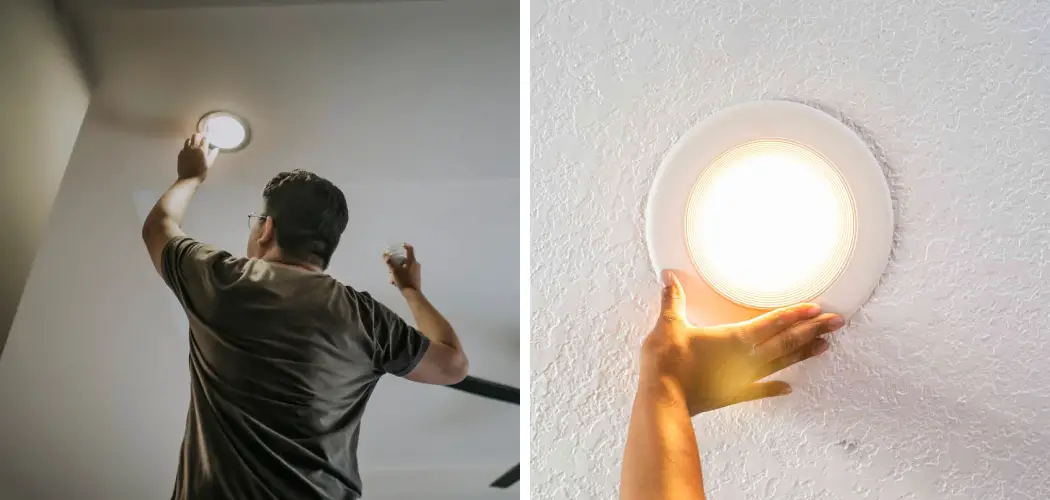Are you tired of your recessed lights flickering each time you turn them on? This issue can be more than just a minor annoyance; and it can also cause headaches and eye strain. But don’t worry; you can follow a few simple steps to fix the problem and enjoy a consistent lighting experience in your home.
Flickering recessed lights can transform a room’s cozy ambiance into a scene from a suspense thriller. Not only is it annoying, but it can also signal underlying electrical issues that might need immediate attention. Before you call in the professionals, you can take several troubleshooting steps to diagnose and fix the problem yourself.
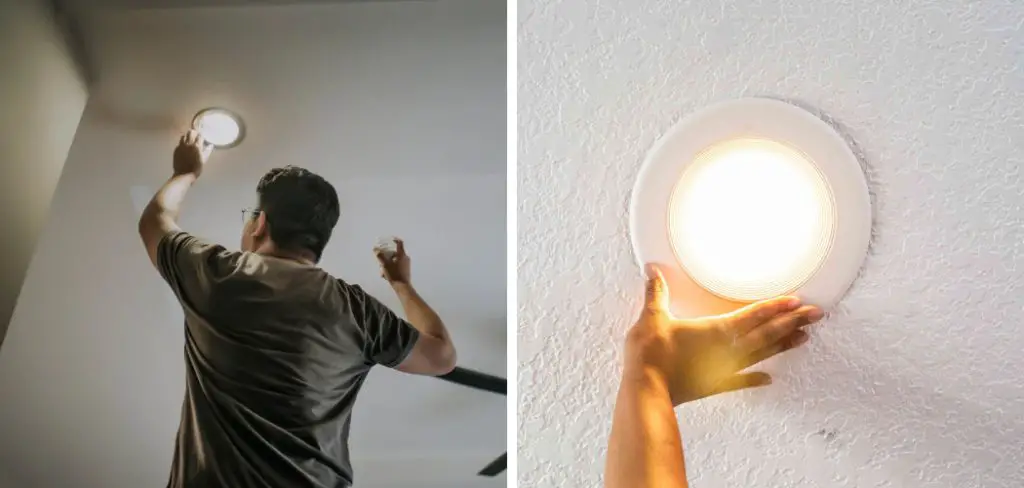
This guide will walk you through the most common causes of flickering recessed lights and provide you with practical solutions on how to fix flickering recessed lights.
What are the Causes of Flickering Recessed Lights?
There are several reasons why your recessed lights might be flickering, including:
- Loose Bulbs: If the light bulbs are not screwed in tightly, they can cause flickering when the connection is disrupted.
- Faulty Wiring: Poor wiring connections or damaged wires can lead to flickering lights. This issue requires immediate attention from a qualified electrician.
- Overloaded Circuit: If the circuit is overloaded, it can cause flickering lights as it attempts to distribute power among various devices. This can be easily fixed by redistributing the load or upgrading to a higher capacity circuit.
- Incompatible Dimmer Switch: Flickering lights can also occur when using dimmer switches that are incompatible with the type of light bulbs used. Make sure to use dimmer switches that are specifically designed for LED or CFL bulbs.
- Old or Faulty Ballast: A faulty or old ballast can cause flickering if you have fluorescent recessed lights. Replacing the ballast might solve the issue.
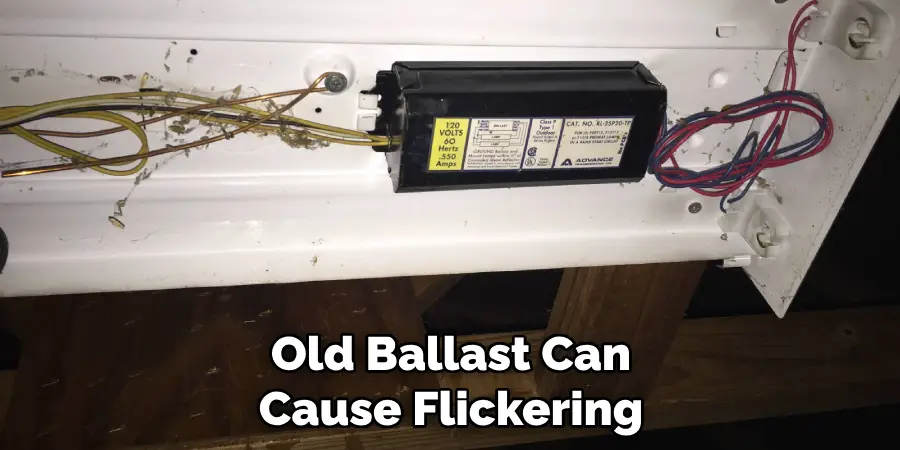
These are just a few of the potential causes of flickering recessed lights. Identifying the specific cause is important before attempting to fix the problem.
What Will You Need?
Before you begin troubleshooting, make sure you have the following tools and materials on hand:
- Replacement Bulbs: If your bulbs are faulty or incompatible with your dimmer switch.
- Screwdriver: To tighten loose bulbs or remove light fixtures for inspection.
- Voltage Tester: This will help you determine if there are any electrical issues causing the flickering.
- Wire Nuts: These are necessary for fixing any loose wiring connections.
- Dimmer Switch: If the current dimmer switch is incompatible, you will need to replace it with one suitable for LED or CFL bulbs.
You can start troubleshooting once you have all the necessary tools and materials.
10 Easy Steps on How to Fix Flickering Recessed Lights
Step 1. Turn Off the Power:
Safety should always be your first priority when working with electrical components. Before you attempt any troubleshooting or repairs, it’s crucial to turn off the power to the circuit that you’ll be working on. This can typically be done at your home’s main electrical panel by switching off the lighting circuit’s breaker. It’s a good practice to use a voltage tester on the lights after turning off the breaker to ensure no power is running to them. This step prevents the risk of electric shock and ensures a safe working environment as you move on to diagnosing and fixing the flickering lights issue.

Step 2. Check the Bulbs:
Carefully remove the light bulbs from the recessed fixtures to check if they are screwed in properly. A loose bulb can be a simple yet common cause of flickering. If the bulbs are not tightened sufficiently, screw them in snugly, but be careful not to over-tighten, as this could damage the bulb or socket. In cases where the bulb appears to be faulty or near the end of its lifespan, consider replacing it with a new one that matches the fixture’s specifications.
Step 3. Inspect Wiring Connections:
After ensuring the bulbs are correctly installed, inspecting the wiring connections within the recessed lighting fixtures is next. Remove the fixture carefully to access the wiring. Use your voltage tester to ensure no current flows through the wires. Look for any loose connections or signs of wear and tear on the wires. If you discover any loose wires, use wire nuts to secure them. If the wiring appears damaged, it may be necessary to consult with a professional electrician to repair or replace the faulty wiring.
Step 4. Evaluate the Circuit Load:
Evaluate whether your circuit is overloaded. This involves checking the total wattage of all devices and lighting connected to the same circuit as your flickering recessed lights. If the total exceeds the circuit’s capacity, it can cause flickering due to insufficient power distribution.
You can alleviate this issue by redistributing the load across different circuits or considering upgrading to a higher capacity circuit by consulting with a professional electrician. This step can help in ensuring that your lighting and appliances operate smoothly without overburdening the electrical system.

Step 5. Test the Dimmer Switch:
If your recessed lights are connected to a dimmer switch, verifying whether the switch is compatible with your light bulbs is essential. Some dimmer switches do not work well with LED or CFL bulbs, leading to flickering. You can test this by replacing the bulbs with ones you know are compatible with the dimmer. If the flickering stops, the issue is likely due to incompatibility.
In this case, replacing the dimmer switch with one that is explicitly designed to work with your type of bulb can resolve the problem. Make sure to turn off the power at the circuit breaker before attempting to replace the dimmer switch, and consult the switch’s installation manual to ensure correct installation.
Step 6. Address the Ballast for Fluorescent Lights:
If you are troubleshooting fluorescent recessed lights, the ballast might be the culprit behind the flickering. The ballast regulates the current to the bulbs and provides sufficient voltage to start the lights. Over time, a ballast can become faulty or wear out, leading to flickering. To fix this, first, ensure the power is turned off at the circuit breaker. Then, remove the fluorescent bulbs and access the ballast.
Check for any visible signs of damage or wear. If the ballast appears damaged or is very old, it may need to be replaced. Purchase a new ballast that matches the specifications of your current one. Follow the manufacturer’s instructions carefully to install the new ballast. After installation, replace the bulbs and turn the power back on to test if the flickering has stopped.
Step 7. Examine the Light Fixture Housing:
Sometimes, the issue might be with something other than the electrical components but with the recessed lights’ physical housing. After ensuring that the power remains off, inspect the housing for any visible damage, such as warping or loose fasteners, which could affect the bulb’s stability and connection.
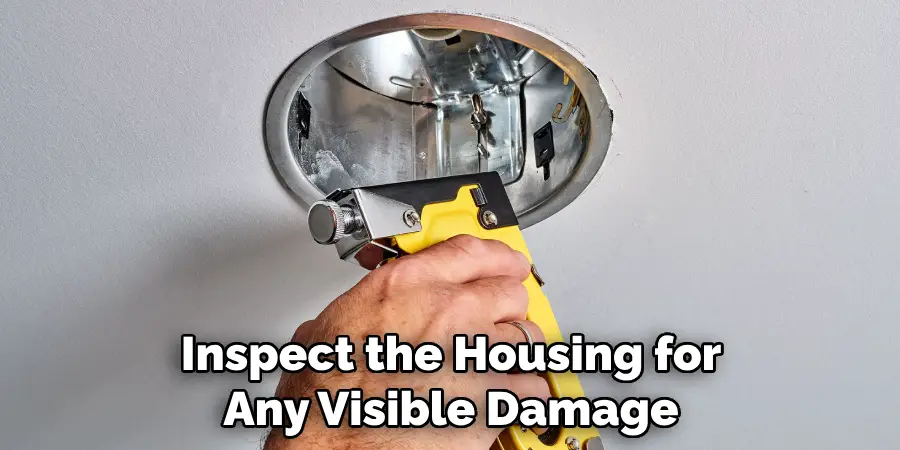
Make adjustments or secure the housing as necessary. If the housing is damaged beyond simple repairs, it might require replacement. This step ensures that the physical integrity of the light fixture supports proper electrical functioning and reduces the likelihood of flickering caused by physical disturbances.
Step 8. Reevaluate the Light Switch:
Once you’ve dealt with the bulbs, wiring, and potential dimmer switch issues, it’s time to take a closer look at the standard light switch used to control the recessed lights. Defective or aging light switches can cause flickering issues due to poor connection or internal wear. Turn off the power at the circuit breaker before removing the switch plate and examining the switch itself.
Look for any signs of damage, overheating, or loose connections. You may need to replace the switch if it shows any signs of malfunction. Ensure you select a switch that matches the specifications required for your lighting system. After replacing the switch, turn the power back on and check if the flickering persists.
Step 9. Consult a Professional Electrician:
If your recessed lights continue to flicker after following all the previous steps, it may be time to consult a professional electrician. Persistent flickering could signal a more complex issue within your home’s electrical system, such as problems with the electrical panel or hidden damages in the wiring.
A licensed electrician can conduct a thorough inspection, diagnose the root cause of the flickering, and perform the necessary repairs to ensure your lighting operates safely and efficiently. Remember, working with electricity can be dangerous, and professional assistance ensures that all electrical work complies with local codes and safety standards.
Step 10. Regular Maintenance and Monitoring:
After resolving the issue of flickering recessed lights, it’s crucial to adopt an ongoing maintenance and monitoring routine. Regularly check your lights for any signs of flickering or other abnormalities. Clean the fixtures to prevent dust accumulation, which can affect performance. Also, keep an eye on the electrical load of your circuits to avoid overloading.

This proactive approach helps identify potential issues early on, ensuring that your recessed lighting continues to function optimally and reducing the likelihood of future problems. Remember, regular maintenance not only prolongs the lifespan of your lighting fixtures but also contributes to the safety and efficiency of your home’s electrical system.
By following these steps and addressing any issues promptly, you can prevent flickering recessed lights from causing inconvenience and ensure that your home’s lighting operates reliably.
5 Additional Tips and Tricks
- Check the Dimmer Compatibility: Ensure that your dimmer switch is compatible with the type of LED recessed lights you have installed. Using a mismatched dimmer can lead to flickering issues.
- Inspect the Bulb Tightness: Sometimes, simply tightening the bulb can resolve flickering problems. Loose bulbs in recessed lighting fixtures may not have a stable connection, hence the flickering.
- Examine the Power Load: Flickering can occur if the circuit is overloaded. This is common in older homes where the electrical systems are not designed to handle modern lighting demands. Consult with an electrician to assess and upgrade your electrical circuit.
- Replace Faulty Switches: Light switches can wear out over time and cause flickering. Replacing old or faulty switches with new ones can provide a more secure connection and eliminate flickering issues.
- Use Quality LED Bulbs: Not all LED bulbs are created equal. Investing in high-quality, reputable brands of LED bulbs for your recessed lighting can prevent flickering and ensure a longer lifespan for your lighting installation.
With these additional tips and tricks, you can troubleshoot and eliminate any flickering issues with your recessed lighting.
6 Things You Should Avoid
- Ignoring Dimmer Compatibility: Install dimmer switches without checking if they’re designed to work with your LED recessed lights. This could exacerbate flickering issues instead of solving them.
- Overlooking Wiring Problems: Attempting DIY fixes without proper knowledge can be dangerous. Wiring problems might cause flickering and should be inspected by a professional.
- Using Low-Quality LED Bulbs: Opting for cheaper, lower-quality LED bulbs can lead to more issues down the line, including frequent flickering and a shorter lifespan of your lighting fixtures.
- Neglecting Fixture Compatibility: Installing bulbs not intended for your specific type of recessed lighting fixtures can lead to poor performance and flickering. Always ensure bulb and fixture compatibility.
- Overloading Circuits: Adding more lights to an overloaded circuit can cause flickering and potential safety hazards. Always consult with an electrician before increasing the load on your home’s electrical circuits.
- Ignoring Warning Signs: If flickering persists even after trying these tips, it could be a sign of a more significant underlying issue. Pay attention to it and instead seek professional help to avoid potential safety hazards.
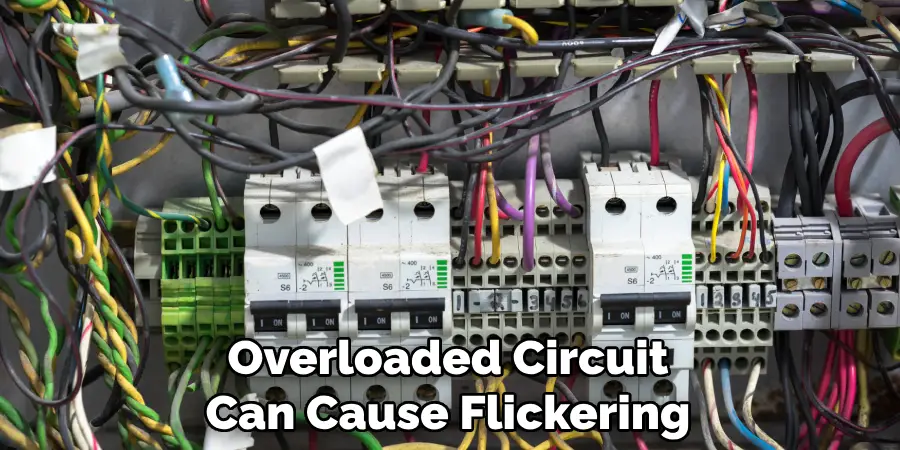
By avoiding these mistakes, you can save time and money on fixing flickering recessed lights and ensure a safe and stable lighting system in your home.
Can Flickering Lights Damage?
Flickering lights is not only an annoyance but could also cause damage to your lighting fixtures. The constant on/off cycle can put a strain on the electrical components of your recessed lights, leading to premature failure and replacement costs.
Frequent flickering can also affect the overall performance and lifespan of LED bulbs. It’s important to address flickering issues promptly to avoid potential damage and save on maintenance costs in the long run.
Overall, addressing flickering lights is essential for proper functioning and protecting your investment in quality recessed lighting and ensuring a safe and well-lit home environment. Keep these tips in mind to troubleshoot and prevent flickering issues with your recessed lighting.
Will a Resistor Fix Flickering Recessed Lights?
In some cases, adding a resistor to your recessed lighting can fix flickering issues. A resistor reduces the amount of electrical current passing through the circuit and can help stabilize the flow of electricity to prevent flickering.
However, it’s essential to consult with an electrician before attempting this solution. It may not be suitable for all types of lighting fixtures and could cause other issues if not installed correctly. It’s best to address flickering issues by following the abovementioned steps and consulting with a professional for any necessary electrical work.
Overall, using resistors to fix flickering recessed lights is a temporary solution and should only be considered after trying other troubleshooting methods.
What Can You Use Instead of Recessed Lights?
If recessed lights are not your preferred lighting option, there are several alternatives to consider, such as:
- Pendant Lights: These hanging lights add a decorative touch and provide focused lighting for specific areas.
- Track Lighting: Similar to recessed lights, these can be installed on the ceiling but offer more flexibility in terms of direction and placement.
- Wall Sconces: These provide ambient lighting and can be mounted on walls to add a touch of style.
- Chandeliers: A classic option that adds elegance and is a focal point in a room.
- Floor or Table Lamps: These portable options are perfect for adding task or accent lighting in specific areas.
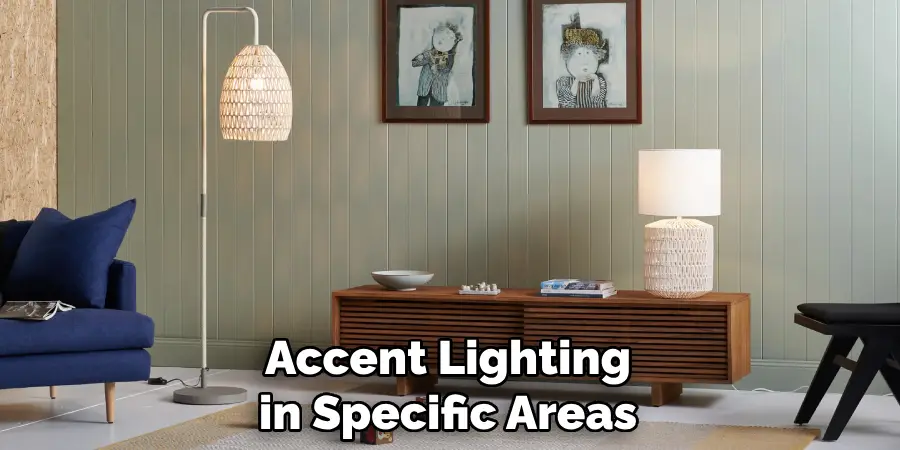
Ultimately, the type of lighting you choose will depend on your personal preference, the function of the room, and the overall aesthetic you want to achieve. Consider consulting with a professional for advice and recommendations on the best lighting options for your space. Overall, many alternatives to recessed lights can provide both functionality and style in your home.
Conclusion
In conclusion, how to fix flickering recessed lights involves a comprehensive approach that starts with simple DIY solutions, such as ensuring bulb compatibility and replacing faulty switches, to more technical fixes involving electrical system assessments and professional consultations. Avoiding common pitfalls, such as ignoring dimmer compatibility and using low-quality bulbs, can also go a long way in eliminating flickering issues.
For those looking to move beyond recessed lights, options like pendant lights, track lighting, and wall sconces offer stylish and functional alternatives. Ultimately, addressing flickering lights enhances your space’s ambiance and contributes to the longevity and efficiency of your home’s lighting system.
Hopefully, this guide has provided helpful insights and solutions for addressing flickering recessed lights in your home. With proper troubleshooting and professional assistance if needed, you can have a stable and well-lit environment that enhances the comfort and aesthetics of your living space. So, don’t let flickering lights dim your mood; take action to fix them today!

